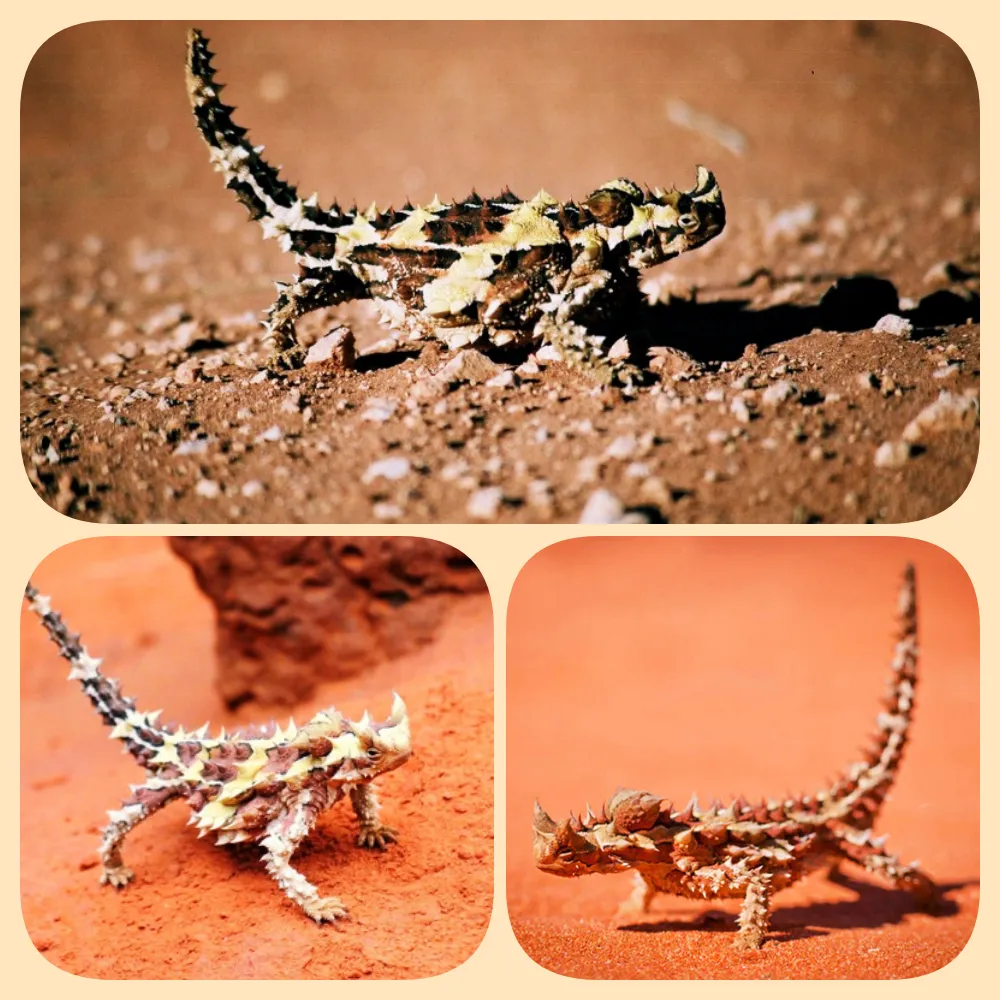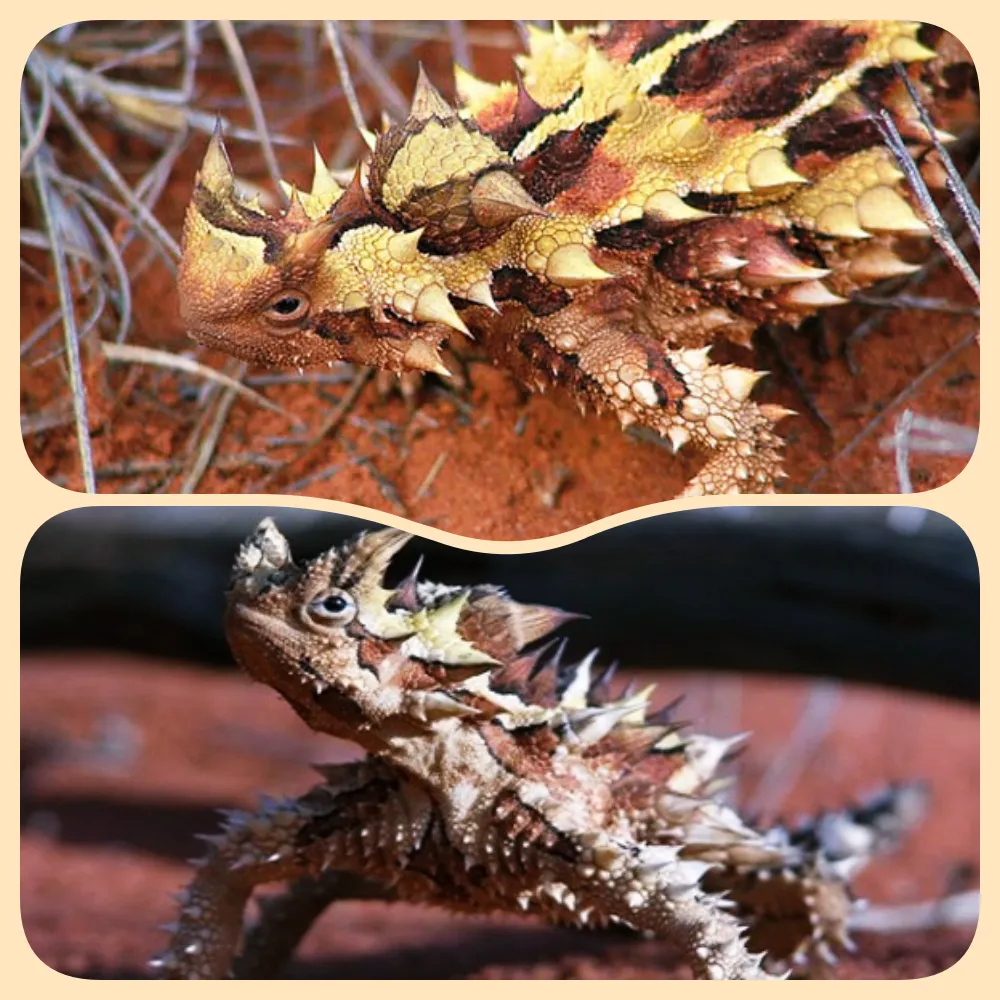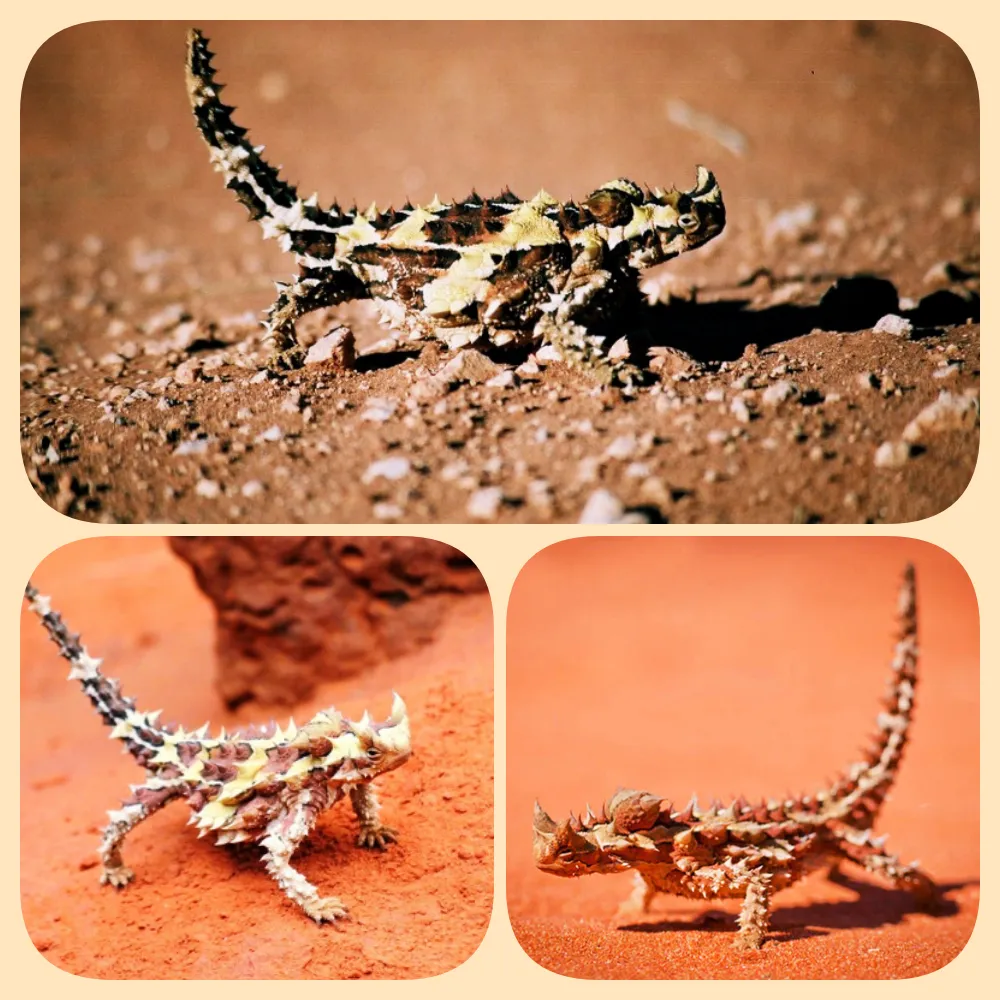The Thorny Devil Lizard: A Desert Dweller That Can Absorb Water from Sand
The Thorny Devil Lizard: A Desert Dweller That Can Absorb Water from Sand
The thorny devil lizard has developed numerous defense mechanisms against predators, including a decoy head and a peculiar jerky walking motion.

The thorny devil (Moloch horridus) is a native of Australia, inhabiting scrublands and deserts, and primarily feeding on ants. This small lizard, which can grow up to 20 centimeters in length, has evolved a series of impressive defensive adaptations, including an appendage on the back of its neck that acts as a fake head.
When threatened, the thorny devil tucks its real head between its front legs, exposing the decoy head. But its defenses don’t stop there. Its body is covered in sharp spikes, roughly the size of rose thorns, which can deter predators by making the lizard difficult to catch, bite, or swallow.
The thorny devil can also puff up its chest to appear larger when faced with danger. When searching for food or a mate in the open, it moves slowly and with a jerky motion, which can confuse predators. This slow and intermittent movement may prevent triggering the chase and attack responses in predators that might occur when they detect rapidly moving prey.
The thorny devil is extremely well-adapted to its harsh, sun-baked environment. In extreme conditions, it buries itself in the sand to shield itself from the sun. It then uses grooves on its skin, located between its scales, to draw moisture from the sand and transport it to its mouth, functioning much like a straw.

The lizard can also change color to regulate its body temperature and metabolic rate. In the cool morning, it appears dark brown, gradually lightening to a pale yellow as the temperature rises and it becomes more active. The lighter color also helps reflect more sunlight, preventing overheating. Additionally, the thorny devil can quickly change color to blend into its surroundings.
The thorny devil was first exhibited in London by naturalist and trader John Gould in 1840, but its scientific name was assigned by zoologist John Gray in 1841. Despite its fearsome appearance, the thorny devil is quite harmless. It can consume thousands of insects in a single day, using its sticky tongue and strong jaws to capture ants.









Post Comment